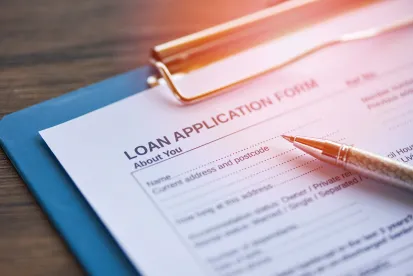In Advisory Opinion 22-17, the US Department of Health and Human Services (HHS) Office of Inspector General (OIG) concluded that a proposed restructuring of a loan and other contractual relationships between a health system and a federally qualified health center (FQHC) “look-alike” clinic would not trigger an enforcement action under the Anti-Kickback Statute (AKS). The Opinion underlines efforts by some hospitals to align with FQHC look-alike clinics to manage their patients’ primary care needs.
What Is an FQHC “Look-Alike” Clinic?
FQHCs and FQHC “look-alike” clinics provide primary care to low-income or otherwise disadvantaged populations that often have significant clinical and social service needs. In recognition of the challenges of serving these populations, various federal policies afford these clinics access to funding opportunities and special benefits unavailable to hospitals and other providers. Notably, clinics designated as an FQHC or FQHC look-alike are entitled to cost-based Medicare and Medicaid reimbursement rates, which are significantly higher than the rates for similar services provided at an outpatient hospital department.
FQHC look-alikes, in particular, are a subset of facilities that meet the same criteria as FQHCs but do not receive grant-funding through the Health Center Program administered by the federal Health Resources and Services Administration (HRSA) within HHS. Generally, look-alikes offer similar services as health centers that receive grant support from HRSA but may have less capacity than those centers (e.g., look-alikes may provide fewer dental services).
To qualify as an FQHC look-alike, a clinic must have a governing board comprising a majority of members who are patients of the clinic. Non-patient board members are limited in the extent to which they may work in or be affiliated with the health care industry. As a result of these restrictions, few look-alikes and hospitals are owned by a common corporate entity, as exists in many health systems. Without a common corporate structure, look-alikes and hospitals may face more challenges in achieving alignment on mutual quality-of-care and operational objectives.
Nevertheless, the imperative for look-alikes to foster supportive relationships with hospitals and their affiliated health systems can be strong. Among other things, hospitals can offer look-alikes valuable resources in the form of leasable office space, connectivity to a shared electronic health records system, and staffing support through clinical rotations of medical residents and other hospital trainees at look-alike clinic sites. These arrangements can also benefit hospitals by cultivating improved coordination of care and providing patients with an alternative to the emergency room for their basic care needs. According to a recent analysis by Kaiser Health News, at least eight hospital systems have converted existing clinics or built new ones that received look-alike designation from 2019 through 2022.
Anti-Kickback Statute Considerations
Because FQHC look-alike clinics can be a source of patient referrals for hospitals (and vice versa), the AKS must be considered with arrangements involving the exchange of services, goods, or other remunerative benefits between these facilities. That federal statute makes it a criminal felony to knowingly and willfully offer, pay, solicit, or receive anything of value for patient referrals for items or services reimbursable under Medicare, Medicaid, or other federal health care programs.
In the Opinion, issued on September 6, 2022, OIG analyzed a proposal whereby a health system would forgive debt owed by an FQHC look-alike clinic on a line of credit loan in tandem with the restructuring of a lease and services agreement between the parties. Although the proposal would “alleviate a significant financial debt owed by the Clinic to the Health System” and permit the Clinic to use the Health System’s leased office for free, OIG determined that the proposal raised minimal risk of fraud and abuse under the AKS.
The Proposed Arrangement in Advisory Opinion 22-17
The Health System and Clinic were parties to three initial arrangements – a Line of Credit Note, Lease, and Master Services Agreement (MSA) – under which the Health System provided financial and operational support to the Clinic:
-
Line of Credit Note: Under the Note, the Health System lent cash to the Clinic up to a stated maximum amount. In return, the Clinic was obligated to make monthly interest payments on the unpaid principal balance and an application of any “excess cash” on the Clinic’s quarterly balance sheet to the principal. The Clinic was subject to various penalties for non-payment.
-
Lease: Under the Lease, the Health System provided the Clinic with space for one of its primary locations in a medical office building that the Health System owned, as well as access to furniture, fixtures, and equipment therein, in return for fair market value (FMV) rent payments.
-
Master Services Agreement: Under the MSA, the Health System provided certain administrative and medical services to the Clinic in return for FMV compensation payments.
After these arrangements commenced, the Clinic struggled to satisfy its payment obligations. It made no payments under the Lease and only two payments under the MSA. The unpaid portions were charged to the Note, and the Health System increased the loan total on several occasions as the Note charges accumulated. According to the parties, these increases were necessary “because the Clinic did not have sufficient revenue to continue operations without extending the Note.”
Having made only two payments on the Note balance, the Clinic reached a point where its payment burdens jeopardized its financial stability. In the face of these challenges, the Health System offered to fully forgive the outstanding amount, including principal and accrued interest, on the Note through a donation in that amount to the Clinic. Relatedly, the Health System proposed a new MSA under which the Health System would provide various services to the Clinic in consideration of an FMV fee. The Health System also proposed a new lease under which the Health System would permit the Clinic to continue to occupy the same office space but without imposing any rent charges.
OIG’s Analysis
OIG noted that the proposed restructuring of the Health System and Clinic’s financial relationships met the threshold elements to warrant AKS scrutiny. That is, the parties had a referral relationship for services reimbursable by federal health care programs, and the proposal included remuneration under the Note Donation and New Lease that was, in effect, a subsidy of the Clinic’s operations by the Health System.
Where an arrangement implicates the AKS, the parties involved can ensure compliance by structuring the arrangement to fit the requirements of a safe harbor. One such safe harbor (referred to as the FQHC safe harbor and codified in 42 CFR § 1001.952(w)) protects “the transfer of any goods, items, services, donations or loans (whether the donation or loan is in cash or in-kind), or combination thereof from an individual or entity to a health center.” In this case, however, OIG determined the proposal between the Health System and Clinic did not qualify for safe harbor protection because the Clinic was only an FQHC look-alike, not an actual FQHC as the safe harbor required.
Even so, OIG concluded that the proposal between the Health System and Clinic posed a low risk of fraud and abuse to prompt an enforcement action under the AKS for the following reasons:
-
Substantial Compliance with FQHC Safe Harbor: The sole reason the FQHC safe harbor did not apply was because the Clinic was an FQHC look-alike. In all other respects, the arrangements would be structured and operated in a manner consistent with that safe harbor. For example, the Clinic had determined the arrangements advanced access to and quality of care to a medically underserved population and was prepared to document that determination prior to commencement of the arrangements and at least annually thereafter.
-
Government Oversight: As an FQHC look-alike, the Clinic was subject to oversight of its operations and finances by HRSA. Although not presently an FQHC, the Clinic intended to seek future grant-funding from HRSA to qualify as an FQHC, in which case the Clinic would be subject to further oversight. In the meantime, the Clinic received other federal grant funds or awards that required compliance with the same or similar oversight and reporting obligations with which FQHCs must comply.
-
No Improper Patient Steering: The arrangements had certain attributes that would reduce the risk of “inappropriate patient steering from the Clinic to the Health System,” including the absence of any mandate for the Clinic to refer patients to the Health System. OIG also noted that “one of the Health System’s stated aims for the Clinic is to reduce overutilization of the emergency departments at the Health System’s hospitals.”
-
Shared Mission and History of Alignment: The Health System and Clinic had a longstanding history of alignment in furtherance of their shared mission to promote access to care by low-income individuals, regardless of ability to pay, and achievement of other related goals.
Key Takeaways
FQHC look-alikes can play an important part in a health system’s ambulatory care and population health strategies. But, as the Opinion illustrates, these clinics may face financial challenges requiring significant financial investment from a health system partner. If an arrangement between a health system and look-alike has characteristics like those that OIG emphasized in the Opinion, the arrangement may potentially include generous subsidy support from the health system, without increased risk that OIG would challenge the arrangement as an impermissible kickback scheme.
The Opinion is available here.



 />i
/>i

